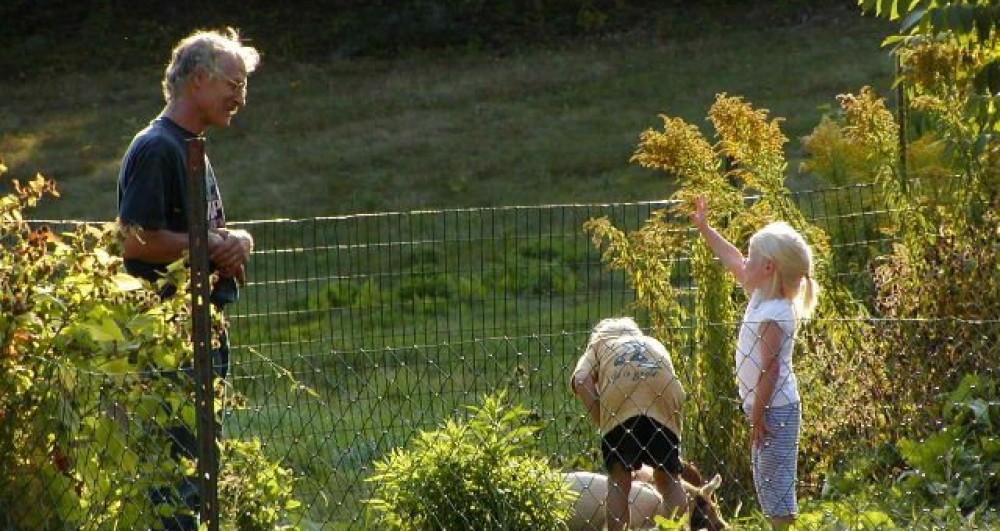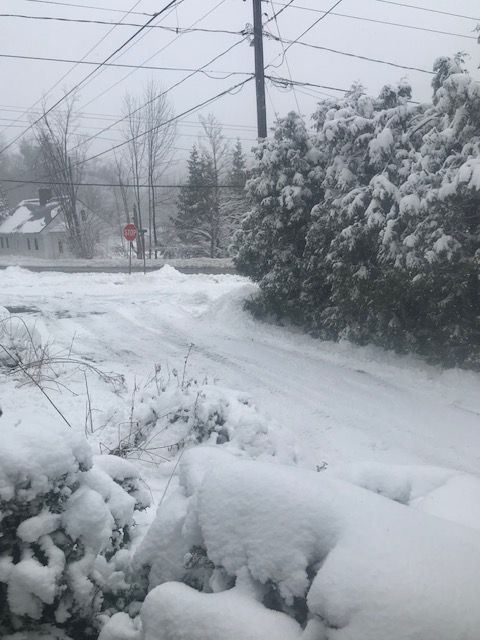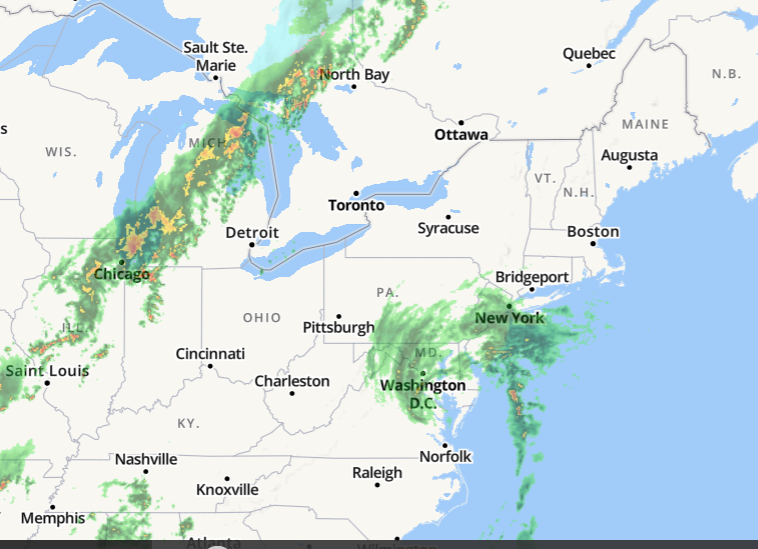(Note: This post was begun some weeks ago, but, due to interruptions, I’m only finishing it up tonight. Sorry if some of the graphs are dated.)
Well, we are past the yearly “sea-ice maximum”, so I suppose I should do a sea-ice post, but I’m rather uninspired. Rather than proving we are reaching the dreaded “tipping point”, any discussion about sea-ice has become a “moot point”. Further discussion is more or less pointless.
First, for many young Alarmists the idea of Global Warming is an indoctrination they’ve received from early in grade school. Both they and their teachers watched Al Gore’s “Inconvenient Truth” (2006) yet they were never exposed to the carefully thought-out decision by a British court which stated the movie was only one side of a political debate, and students shouldn’t be exposed to it without being informed Al Gore spoke eleven falsities. (2007).
Such students and teachers don’t need to see any evidence to know Global Warming is “true”, because they were taught by teachers who didn’t need to see any evidence either, because it was in the book they taught from (or video they taught from.). For such people Global Warming is a pertinacious and deep rooted falsity, founded in faith in those who taught them. To question Global Warming questions the integrity of Miss Fruitisweet, a third grade teacher who was just about the only kind teacher they experienced in twelve years of academic monotony. She may have taught by the book, and the book may have held balderdash, but to question her integrity is like slaughtering a holy cow for burgers. Miss Fruitisweet was patient, kind and loving, and it wasn’t her fault that she too trusted an authority prone to balderdash. Miss Fruitisweet may have brainwashed innocent children, but she did so out of love, meaning well.
In any case, such brainwashed people tend to avoid actual discussion with pleas to authority: “The textbook says so” or “Dr. Pixiznose said so,” or “scientists say”, or “the science is settled,” or “the consensus agrees.” Actually discussing things becomes next to impossible with such people, because they don’t seem to know how to think; only how to believe.
Secondly, politics destroyed a lot of the best research being conducted, because politics demands science prove certain points and discredit others, whereas Truth doesn’t take sides. But the blustering bully of power politics imagined it could control Truth by funding scientists whose research agreed with “their side’s” agenda, and by de-funding those whose research dared disagree. It would not matter if “their side” was saying up was down, money talked, and funding made nonsense “true”.
Such funding is like bribing a judge. It turns the courtroom into a mockery of justice. The judge is not carefully weighing evidence, deeply concerned with righteousness. Instead he is unrighteous. Rather than the clear intellect of a clean conscious, and the purity of untarnished intuition focused on truth, bribes basically turn minds into whores, making a mockery of love, for money.
Besides Dr. Pixiznose’s tendency to be a whore, the media also have proved woefully susceptible to bribes, and became culpable for their sensationalist, blaring headlines of even the most absurd hypotheses that furthered the Global Warming hysteria, and their complete silence concerning the hard work of scientists who found reasons to have hope that the world wasn’t going to end by now. To deepen their disgrace, the media not only censored their own better judgement, but rabidly advocated the censorship of those with far better judgement than the media ever dared manifest.
Lastly, as politics descended from at least a semblance of righteousness into the current squalor of corruption, harmonious cooperation fell apart, especially in terms of arctic research. For example, the Russians were deeply interested in arctic research, considering the thousands of miles of coastline they own, facing the Arctic Sea. They had great resources they wished to exploit, but others felt such exploitation was a bad thing, for various reasons. However initially Russia was able to cooperate with other nations, as is apparent if you look back at my posts about the “Barneo” bases Russia set up every year, (right about now, In early April). Norway and the Ukraine worked hand in hand with Russia in these endeavors, which involved research, military exercises, and tourists who could afford to splurge big bucks, having a blast. Needless to say, Russia and Ukraine are no longer so cooperative, those lovely days are long gone, and “Barneo” is fading into a fond memory.
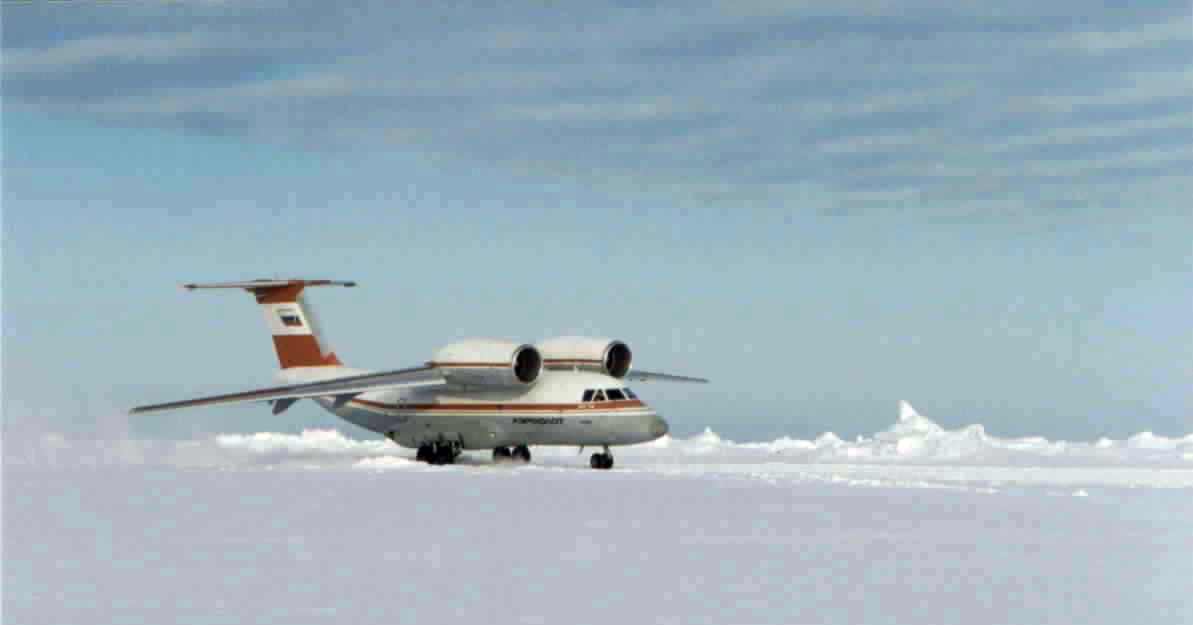
Even back in 2016 the politics at the Pole were getting intense. If you have the time, here’s a post (I’m rather fond of) about how crazy things were getting even back then.
Now eight years have past, and things have gone steadily downhill. The only good I can see is that the corruption has become so grotesque, and the sham so absurd, that people are getting downright sick of it. Even scientists working in hostile environments, where any outright questioning of Global Warming might get you swiftly fired or, if you have tenure, get your funding cut off, are scientists who tend to avoid mentioning Global Warming at all in the body of their papers, and only add a flimsy genuflection in the conclusion. I sense a sort of wink-wink, nudge-nudge in some of these obligatory genuflections, as if, between the lines, is written, “We all know this is bullshit, but here goes.”
Why are people fed up? Well, you can only screech the sky is falling for so long before people start to notice the sky isn’t.
For example, because air temperatures, and SST (Sea surface temperatures), were well above normal the past year, I expected more sea-ice to melt than usual, but that didn’t happen. In the chart below 1996 is the green line, while 2024 is the blue line. While the 1996 maximum was towards the end of February the 2024 maximum was delayed to the end of March, and while the 1996 level was well above 2024 towards the end of February, by the end of March they are roughly the same. There is no apparent “shocking decline” in the “extent”, despite the passage of 28 long years.

This is also apparent in the DMI graph of the March “extent” (an average for the entire month). In a sense the “trend line” looks silly, for the trend since 1996 has been basically flat, (follow the central line, indicating 15 km2 of extent, and you’ll see the two years are nearly the same.)
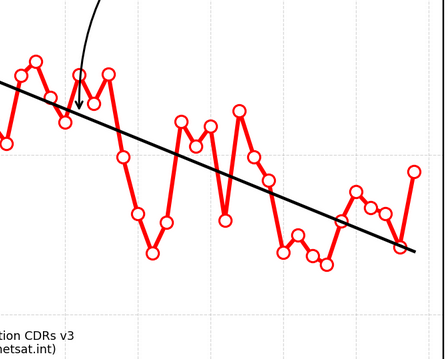
The “trend line” included in such graphs is based on the sea-ice level of 1979, which much evidence indicates was the highest level in recent times. Some say it is “the start of the satellite record”, but the first IPCC reports show graphs using satellite data which indicate far lower “extent” levels only a few years earlier, and we have this early “Nimbus” satellite shot from September 1969 which shows a large area of open water towards 80 degrees north latitude, north of Bering Strait.
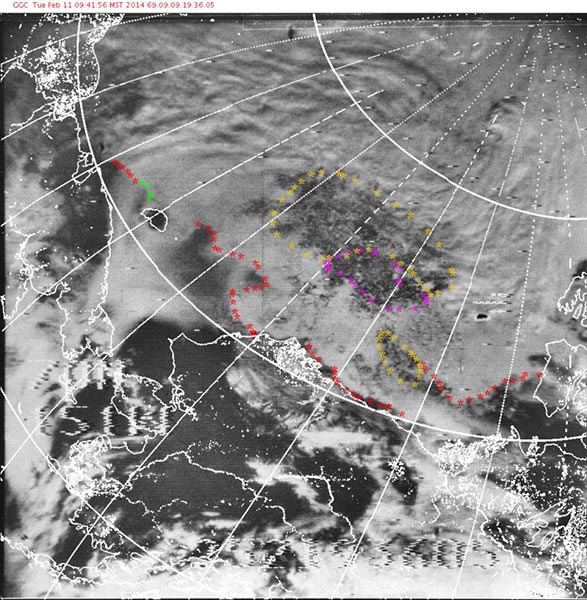
It is fairly clear that sea-ice has always fluctuated between high and low levels. If you bother study history you see it has been doing so for some time. Willem Barentsz sighted the entrance of Raudfjorden in June of 1596 in a small, sail-powered wooden ship, whereas it would have taken a steel, diesel-powered ice-breaker to have reached the same spot in June of 2023. If I was foolish I could use 1596 as my start day, and create a rising “trend-line” from 1596 to 2023 which could freak everyone out by suggesting sea-ice was growing, and we were all about to freeze. And, back in 1979, we experienced a cold period which caused some false prophets to freak everyone out with “The Ice Age Scare”.
The funny thing is that some now attempt to assert “The Ice Age Scare” never happened.

However I was alive at the time, and can vouch that it did happen. In case you doubt an old man’s memory, Tony Heller used the “way back machine” to compile a long, long collection of media sensationalism which shows that the “Ice Age Scare” was a lot more than, as the above article suggests, “nine paragraphs”.
1970s Global Cooling Scare
One interesting character in the Ice Age Scare was Steve Snider.
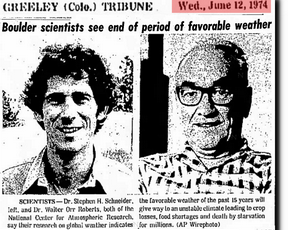
What was interesting about Steve was he switched so effortlessly from the Ice Age Scare to the Global Warming Scare. His primary interest seemed to be scaring the public. He seemed to think logic wasn’t enough, and the public was basically imbeciles, and needed to be bossed about by smart people, like himself. He moved on to become a notorious “gatekeeper” at Wikipedia, zealously removing any evidence that Global Warming was anything other than “settled science.” Then he unexpectedly did something I must do, and indeed all must do eventually. He died, at a relatively young age.
It must be odd to die when you think you have years ahead of you. You think you can continue to manipulate data, and that these manipulations of truth will eventually have some result other than the dishonesty you believe is justified. But you do not live to see that day, which you think will excuse all your dishonesty. Instead you are abruptly dead, and all you have to show is a lifetime of deceit. It must be especially hard if you are an Atheist. You die, and abruptly become aware Truth is calling you forward to be judged on what you have done. And what have you done? All you have done is make a good living denying Truth.
Personally I believe my departure from this creation will bring me face to face with Truth. Even back when I attempted Atheism, I believed the final nano-second I was existing would confront me with Truth. Was I honest, or was I a liar?
The problem with being a liar is that you lose touch with Truth. A discrepancy is created, as is displayed in the above graphs. At that point the liar can either confess their mistake, or double down on the lies, attempting to cover up prior lies with further lies. This only doubles the discrepancy, which eventually becomes glaring.
And this is the point we have reached with the arctic sea-ice “Death Spiral” hysteria. There is no “Death Spiral”. In fact, even during this very warm year, when there seemingly should be a decrease in sea-ice, the levels increase. What the heck is going on?
This is what a sane government would pay its scientists to figure out. Instead our insane government pays scientists to support a scare-story which justifies their declaring martial law, so they can have dictatorial powers. What they don’t understand is that, in setting aside real science, they are losing the power real science offers. They may be chuckling to themselves, thinking how a false disaster tricked the public into giving them control, but may at the same time be blind to a genuine disaster. They are sipping tea in a house with exotic rice-paper walls, floating on a houseboat midst water lilies, fed luxuries and fanned by a servile staff with English accents, oblivious to the fact they are just upstream from a thundering waterfall.
One danger we may be about to face is a repeat of the Dalton Minimum. That time of a “quiet sun” ended with a couple of volcanic convulsions that left ash in the ice core samples of both Greenland and Antarctica. One we can identify as Tambora in Indonesia, but the other is a mystery volcano. After all, this happened in 1810, and we hadn’t gotten our satellites up, quite yet.
All the ash and sulfur thrown into the atmosphere by these convulsions led to some bizarre weather, contributing to famines, which contributed to tremendous societal upheavals. (If you want specific details, go through my long-winded past posts.)
One thing they knew nothing about, during the Dalton Minimum, was what was occurring at the bottom of the sea. Now we are seeing a surge in the seismic activity along mid-ocean ridges, which suggests (to some) that besides the eruptions we can see, like the spectacular eruption of Tonga last summer, there are equally spectacular but totally hidden eruptions occurring over a mile down in the deep sea depths.
The temperature of the water down that deep is close to the freezing point of fresh water, and the sudden appearance of lava as hot as 2000 degrees is bound to change the status quo. How so? We have no idea.
We might have had some idea, if the great scientist Bill Gray had been funded. He wanted to study “thermohaline circulation”, however he was honest to Al Gore, and told Al he didn’t think CO2 had all that great an effect on climate, and Al Gore, to his eternal shame, severely cut the funding to an honest and brilliant man. So we know little about “thermohaline circulation”, while we have spent trillions on stuff that basically is disconnected from rational thinking, such as solar power, windmills and electric cars.
However odd stuff is certainly happening to our seas. During the El Nino last winter, when waters to the northeast of Australia are ordinarily cooler than normal, during El Ninos, they abruptly became warmer than normal. Yes, there was seismic activity, and yes, this is just west of the enormous Tonga eruption. And no, this has never been seen before. Lastly, it utterly screwed up many long range forecasts, (such as Joe Bastardi’s), because it introduced a never-seen-before variable.
Dr. Roy Spencer and Dr. John Christie at the University of Alabama noted a spike in temperatures.
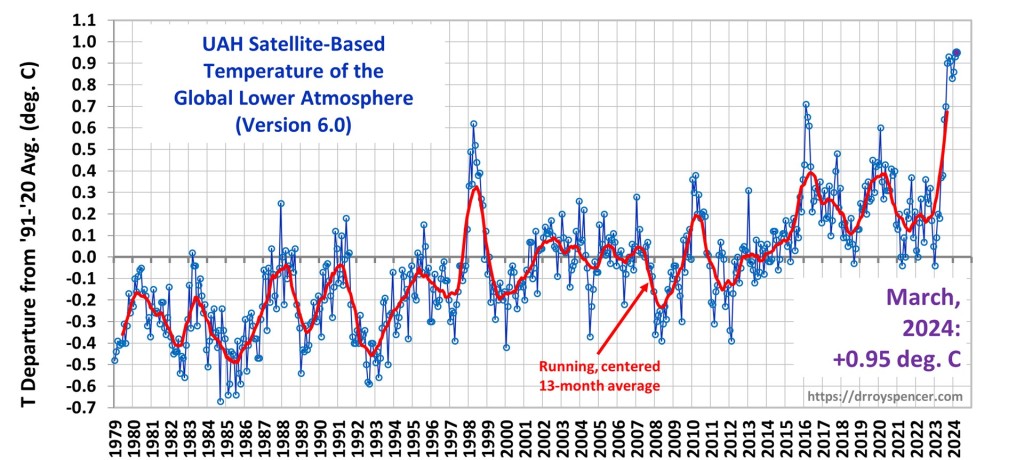
I greatly respect these two men, but I will state their focus is on the atmosphere. They haven’t studied seafloor volcanoes much. They are interested in Tonga, but only because it vaporized so much water and sent the steam high into the atmosphere. Ordinarily they do not lower themselves from the heights to study the depths. They are less interested in eruptions two miles down, which may (or may not) have raised the temperatures of the sea-surface northeast of Australia. But I will state they showed an uncharacteristic interest in a study of whether or not there were “plumes” of warm water rising from the depths, which I think shows they knew something weird was going on.
I will also state that, when I peruse the comments following the post, “How Much Ocean Heating is Due To Deep-Sea Hydrothermal Vents?”, that appeared on Roy Spencer’s site, I am made painfully aware of my own ignorance. My value, if I have any, is primarily as an observer. Back when there were buoys with cameras bobbing about the Arctic Sea it was possible to observe many things which seemed to run contrary to what proponents of the “Death Spiral” theory promised us we’d see. However, once I leave observing and venture into theorizing I step off a shelf and am immediately over my head. Having confessed that, I will state I observed something weird happened last winter.
What was weird? The abrupt appearance of warm water northeast of Australia was weird. It is difficult to explain how weird it was, but I’ll try.
When we attempt to understand a phenomenon such as the El Nino we try to stick to the facts, and not stray from those facts. Even if you believe the Red Sea can be parted, you are not allowed to use belief in your data. Therefore all the El Nino data we had went into creating a clumsy understanding of El Ninos within a computer model, and one component of that understanding was that waters northeast of Australia would be cooler than normal. But last winter utterly broke the rules. Perhaps the Red Sea did not part, but to conventional thinking it was nearly as astounding.
Yet the press ignored the event. It seemed quite unlike them, considering they blame nearly-every-thing-you-can-think-of on Global Warming, but perhaps some recognized the event repudiated the narrative. How so? Global Warming is not a localized event. Background radiation is fair and equal and effects all areas in a smooth manner. This event was concentrated northeast of Australia.
The study which Roy Spencer focused on in the above post was a bit primitive and underfunded. Basically a boat dragged sensors, like a biplane dragging an “Eat At Joe’s” sign up and down a beach. They found no evidence of “plumes” in the small area they crisscrossed, which disappointed me, but which seemed to relieve Christie and Spencer. Perhaps they took it as an indication the oceans were not controlling the atmosphere, and they were not focused on the wrong thing. Or perhaps not. But the fact they actually did look outside their field shows they are real scientists.
My problem is I poke about too much, and have seen evidence of “plumes” in other studies. One fellow was painstakingly tracking the strata of various types of seawater, sliding north like cards in a deck, in the Gulf Stream, with the strata determined by salinity and temperature, and just as the current crossed the mid Atlantic ridge his study got totally screwed up. Something mixed the waters, and, in the diagrams his study produced, the disruptions looked very much like “plumes”, at least to me.
This tickled my fancy, because it seems to me that any disruption of warm currents that basically flow from Florida to the North Pole could result in less sea-ice melting. This makes sense of what is initially counterintuitive: How could lava that warms the SST (sea-surface-temperatures) and atmosphere cause less sea-ice to melt? In this manner: Sea-ice is not melted most from above, but from below. If lava creates a “plume”, and the “plume” interrupts the import of warm waters, it is only logical less melting would occur.
And what happens next? Well, this is what concerns me. The records of long ago, created by using various proxies, show some times of warming followed by abrupt crashes in temperatures. If you want to talk about weird, these crashes are most mysterious. Basically we know they occurred, but not why. Various unverified theories are out there, the most noticed one, (by the mainstream media), involving freshwater lakes abruptly draining into the Atlantic when glacial plugs dissolved and crumbled, but although this may explain a particular down-spike it does not explain others. So I might as well throw my own unverified theory out there.
Suppose a quiet-sun period such as the Dalton Minimum winds down to its end, and the sun gets noisy again. The lava which was so active when the sun was so quiet might cease to be so active, and the abrupt cessation of this warming effect would have obvious repercussions. Some would be more immediate than others. However one repercussion might be a short-term downward plunge in temperature.
Where the Parry expedition in 1819 found summer waters open, and only became frozen in for a winter, and easily escaped the actic the next summer, the Franklin expedition got frozen in so solidly every man on two ships perished, starting in 1845 but likely, because they were so well prepared, taking at least two agonizing years to kill the final sailor. How could the same place get so much colder?
This what we should be studying. Why? Because, what if it is our fate? What happened before can happen again. Won’t we look like complete idiots if, over the next thirty years, there is a dramatic downturn in temperatures, just as we prepare for Global Warming.
This is where Al Gore and his ilk look particularly stupid. Rather than preparing us for disaster, he has diverted trillions of dollars away from what we should have been studying. How different our level of understanding might now be, if only he had heeded Dr. Bill Gray.
And how much I miss Robert W. Felix, and his “Ice Age Now” website.
Stay tuned, (though my focus these days is not so much on sea-ice, but rather rather on how to get back to honesty, and away from wasting so much time and money on bribery and lies.)
